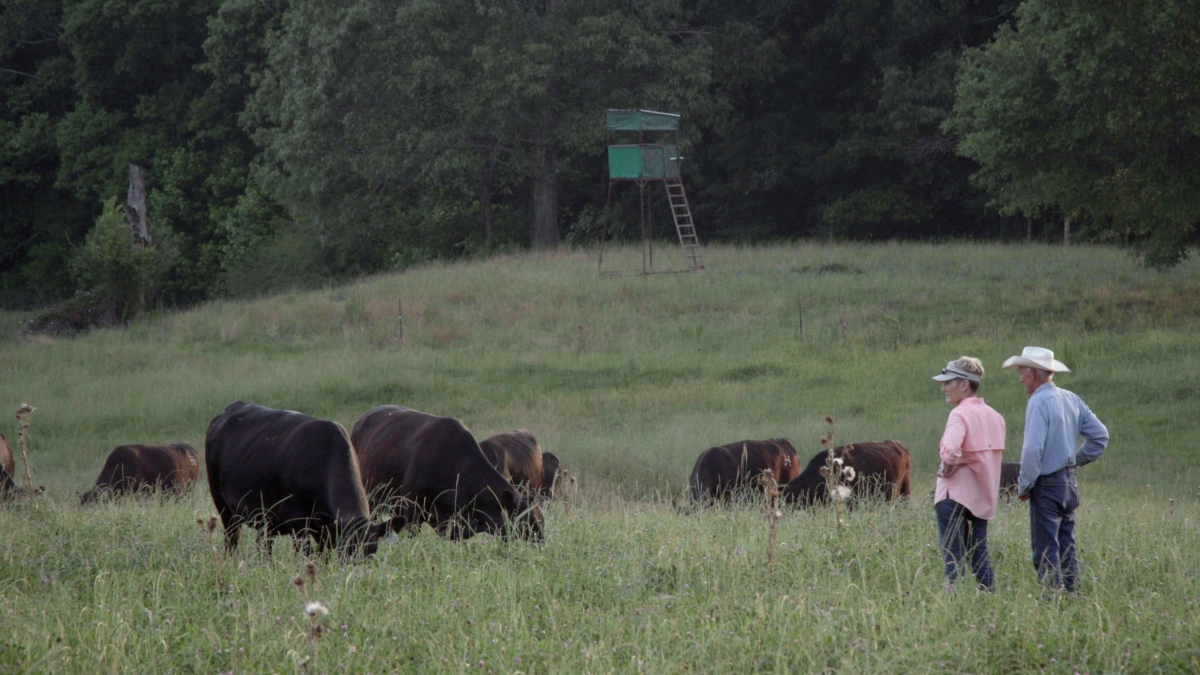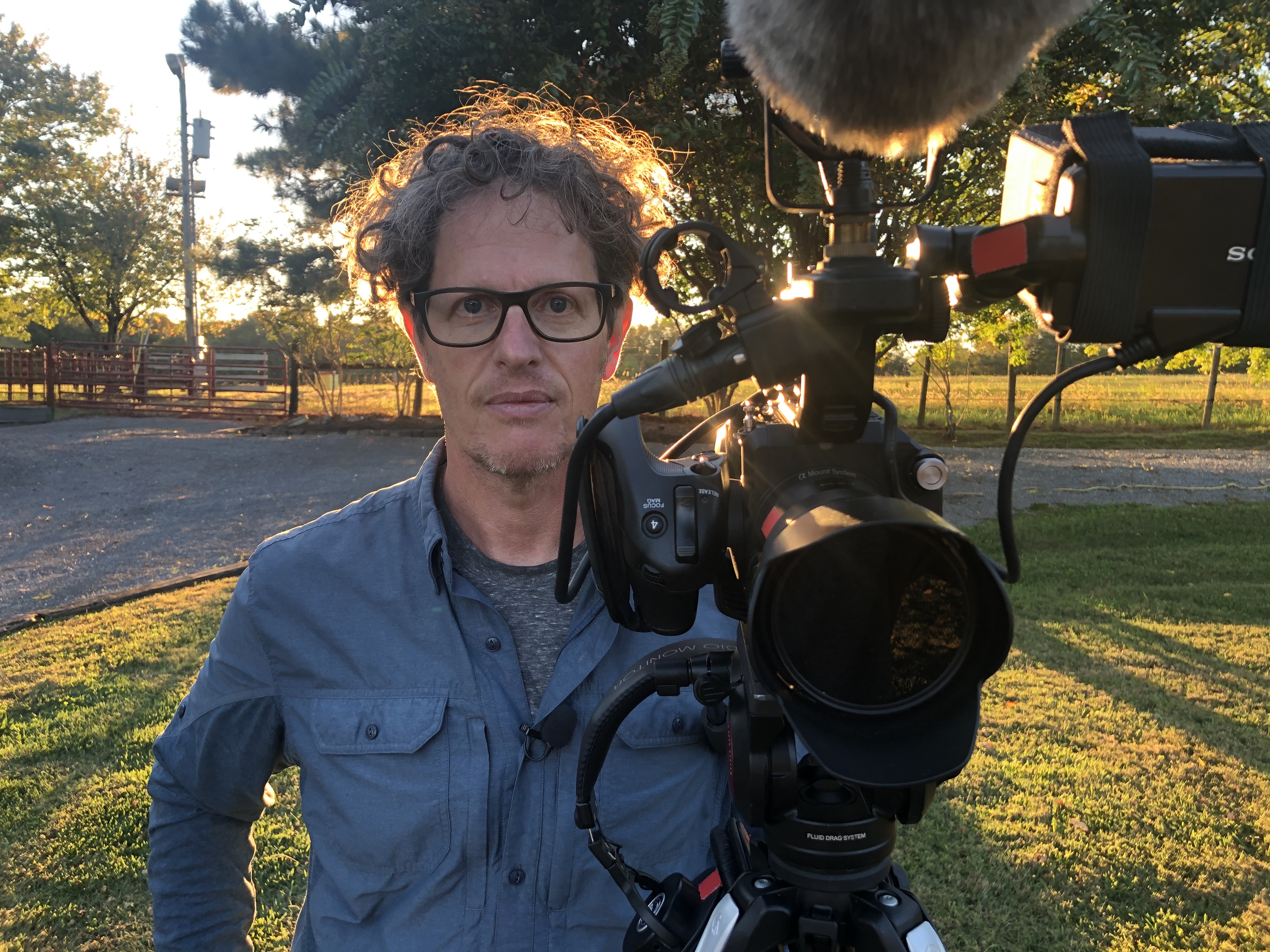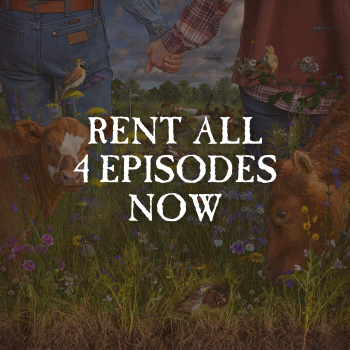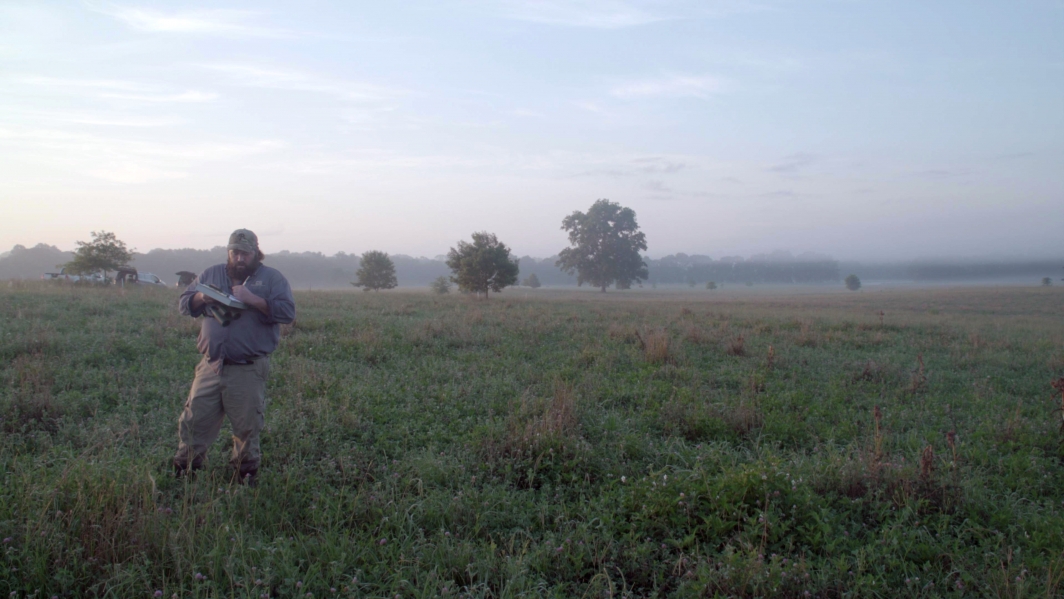Unearthing climate solutions with cattle and soil

Farmers Katie and Cooper Hurst in Woodville, Mississsippi. Photo courtesy of Carbon Nation, 2023
Update: Beginning May 28, 2024, the four-part “Roots So Deep” documentary series will be available to rent at rootsodeep.org. Watch the trailer on YouTube.
____
Peter Byck makes the distinction clear: He is not a farmer, and he’s not a scientist.
Yet, the Arizona State University filmmaker and professor of practice is responsible for bridging the two groups and conducting what has become the most comprehensive cattle grazing and regenerative agriculture research project in the U.S. to date — and he’s secured support from some of the largest corporations in the world, including McDonalds, Foundation for Food and Agricultural Research (FFAR), Cargill, ExxonMobil, Wrangler and Timberland.
Wrangling more than 20 scientists across seven universities and 10 farms in the southeast U.S., Byck initiated the work that has since produced nine peer-reviewed research publications in a quest to find a scalable climate solution.
The answer he’s found is right under our feet.
An underutilized way to graze cattle called Adaptive Multi-Paddock (AMP) grazing, has been helping innovative farmers increase carbon sequestration and improve soil health for years, but very little research has been done to support what both scientists and farmers know anecdotally, and there’s no assurance that traditional grazing farmers would embrace this new solution.
Byck spent the last four years meeting with scientists and farmers, seeking answers and documenting the process along the way. He chronicles the journey in a newly developed four-part docuseries called “Roots So Deep (You Can See the Devil Down There).”
The film will have its Arizona premiere at ASU’s Marston Theater at 6 p.m. Oct. 26.
“This story is based on rigorous science and human emotion; we've got the whole spectrum of science and humanity together,” said Byck, who has dual academic appointments at ASU in the School of Sustainability and the Walter Cronkite School of Journalism and Mass Communication. “It took a filmmaker here at a place like ASU to put together a science team to answer these questions that no one else had taken the time to answer.”

Peter Byck, ASU professor of practice and director of "Roots So Deep. Photo courtesy Carbon Nation, 2023
How we treat our soils
Cattle have long been thought of as fomenters of climate change. They produce methane when they digest food and forests are cleared to grow the feed they need.
However, Byck believes that by transforming how cows are grazed in a way that revitalizes our soils, they too can become allies in the fight against climate change.
Soil, when healthy, acts as a carbon sink, storing substantial amounts of carbon from the atmosphere in the form of organic matter. Healthy soil also promotes beneficial microbial activity that reduces the release of greenhouse gasses produced by agricultural practices; it also promotes plant growth, retains water more effectively, and promotes biodiversity and ecological balance.
On land that has been farmed conventionally — using a lot of tillage, chemical fertilizers and pesticides — soils are not healthy. They’re degraded, as opposed to being a living and organic environment teeming with life.
Instead of the common practice of letting cows graze for months in one big field, AMP grazing, inspired by historical grazing practices of wild buffalo, elk and deer, focuses on rotating cattle through smaller grazing areas to maximize manure distribution and promote healthier soil.
In this method, farmers divide their grazing land into smaller paddocks and rotate their livestock through these paddocks more frequently, allowing for periods of intense grazing followed by rest periods for the land. Frequently rotating the cattle ensures that cattle graze the forage thoroughly while avoiding overgrazing and soil degradation.
“Simply by mimicking the way bison used to move across the Great Plains, farmers are regenerating their land in a phenomenally fast, productive, profitable and enjoyable way,” Byck said. “(The AMP farmers) were building wildlife habitats, they were changing the water cycling on their land, they were getting out of debt and their animals needed a hell of a lot less medication. It’s a win, win, win, win, win, all the way across the board.”
Early results from Byck’s studies show that AMP grazing pulled down up to four times more carbon from the atmosphere compared to conventional grazers, and their cows emitted up to 10% less methane. These farms also had healthier soils, with 33% more insect diversity, 25% more microbial activity, improved water retention capabilities and three times as many grassland birds.
Senior wildlife biologist Mike McGraw takes notes in the field. More than 20 scientists across seven universities and 10 farms in the southeast U.S. were involved in the studies. Photo courtesy Carbon Nation, 2023
Byck champions AMP grazing as a potential climate change game-changer. Embracing this approach could diminish the need for fertilizers, safeguard natural ecosystems and potentially prevent rainforest deforestation for cattle farming.
But for any solution to really work, people need to use it.
That's where a big question comes in throughout the films: Even if the science proves that this new way of grazing is better for the land and can benefit the farmers financially, will the traditional farmers change their ways? Will they try this new approach and become heroes in the fight against climate change?
“Many of my colleagues in the regenerative agriculture space had already given up. They thought farmers wouldn't care about the science,” Byck said. “I disagreed with them. This story is the strongest story I've seen for a solution to climate change. I think our research will prove that farmers, whether they're conventional farmers or adaptive farmers, are very interested in science.”
Screening info
"Roots So Deep (You Can See the Devil Down There)"
Thursday, Oct. 26, Marston Exploration Theater
5 p.m. – Food provided and sponsored by Atlasta Catering
6 p.m. – Film screening
8 p.m. – Q&A with Director Peter Byck, ASU professor of practice
Parking: Validated parking at the Rural Road Parking Structure at 1100 S. Rural Rd. Bring your parking ticket to the event.
More Environment and sustainability

From environmental storytelling to hydroponics, student cohort crafts solutions for a better future
A select group of students from Arizona State University's College of Global Futures, a unit within the Julie Ann Wrigley Global Futures Laboratory, is laying the foundation to drive change…

2 ASU faculty elected as AAAS Fellows
Two outstanding Arizona State University faculty spanning the physical sciences, psychological sciences and science policy have been named Fellows of the American Association for the Advancement of…

Homes for songbirds: Protecting Lucy’s warblers in the urban desert
Each spring, tiny Lucy’s warblers, with their soft gray plumage and rusty crown, return to the Arizona desert, flitting through the mesquite branches in search of safe places to nest.But as urban…



